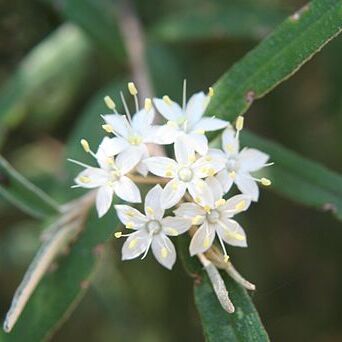Fls us. in corymbs, 5-merous; stamens (8)-10. Ovary 2-5-partite nearly to base, style single, stigma small; ovules 2 per locule, superposed. Fr. of 2-5 cocci, seed with elastic endocarp. Shrubs with alt., gland-dotted, simple lvs. Genus of some 35 Australian spp., and 1 endemic to N.Z.

